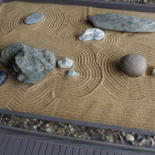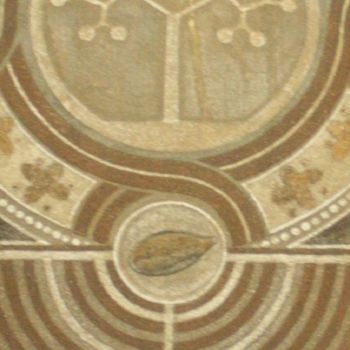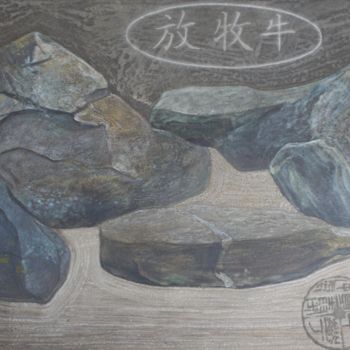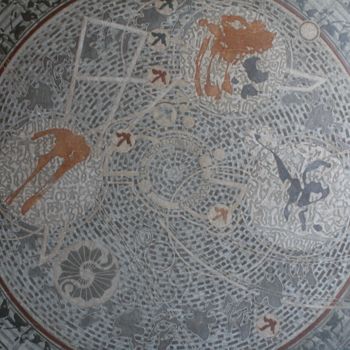Прилив золотистого песка. A rush of Golden sand (2018) Installation by Vladimir Gats
Not For Sale
Sold by Vladimir Gats
This image is available for download with a licence
Sold by Vladimir Gats
-
Original Artwork
Installation,
- Dimensions Height 17.3in, Width 31.1in / 1.00 kg
Сад камней представляет собой ровную площадку, засыпана песком или мелкой галькой. Главными элементами сада являются группы неотесанных камней. Расположение и композиция камней в группах подчиняются определенным правилам, исходящим из мировоззренческих концепций дзэн-буддизма. . На поверхности сада с помощью граблей делаются бороздки, идущие вдоль длинной стороны сада и образующие кольцевые окружности вокруг камней. Традиционно считается, что поверхность сада символизирует океан, а камни — острова. Сады камней предназначены для медитаций, отстранения от мирской суеты и повседневных проблем. Сад подчеркивает тягу японцев к любованию природой, размышлению, уединению. Здесь в явном виде выступают такие принципы, как умение видеть прелесть обыденного и изящество простоты.
Garden of stones " Grazing Buffalo. Garden of stones (YAP. 枯山水 karesansui, letters. "dry mountains and water").
The garden of stones is a flat area, covered with sand or small pebbles. The main elements of the garden are groups of rough stones. The arrangement and composition of the stones in the groups are subject to certain rules coming from the worldview concepts of Zen Buddhism. . On the surface of the garden with the help of rakes made grooves running along the long side of the garden and forming a circular circle around the stones. Traditionally, the surface of the garden symbolizes the ocean, and the stones — the Islands. The gardens of stones are designed for meditation, removal from the bustle of the world and everyday problems. The garden emphasizes the craving of the Japanese to enjoy nature, meditation, privacy. Here, in a clear form are the principles such as the ability to see the beauty of the ordinary and the elegance of simplicity.
Gatz, Vladimir, graduated 2011, chair of EE "Vitebsk state University. P. M. Masherov. Art-graphic faculty. Participant and winner of many national and international competitions and exhibitions. Mostly I create classic paintings in the technique of oil painting. Since 2016, he invented a unique author's technique, " drawing "with natural sand and crushed stone, on the basis of canvas, wood, stone, concrete, etc.This technique is called" archaeological painting " as it is in my view connected with the earth-sand, the basis for creating images. And the word "archaeology" means the method, the way of search, digging, and literally as in the art of archeology is connected with the search. In the thematic focus of "archaeological painting" get the theme in spirit mainly of the archaic period, artifacts.
-
Nationality:
BELARUS

- Date of birth : unknown date
- Artistic domains:
- Groups: Contemporary Belarusian Artists








